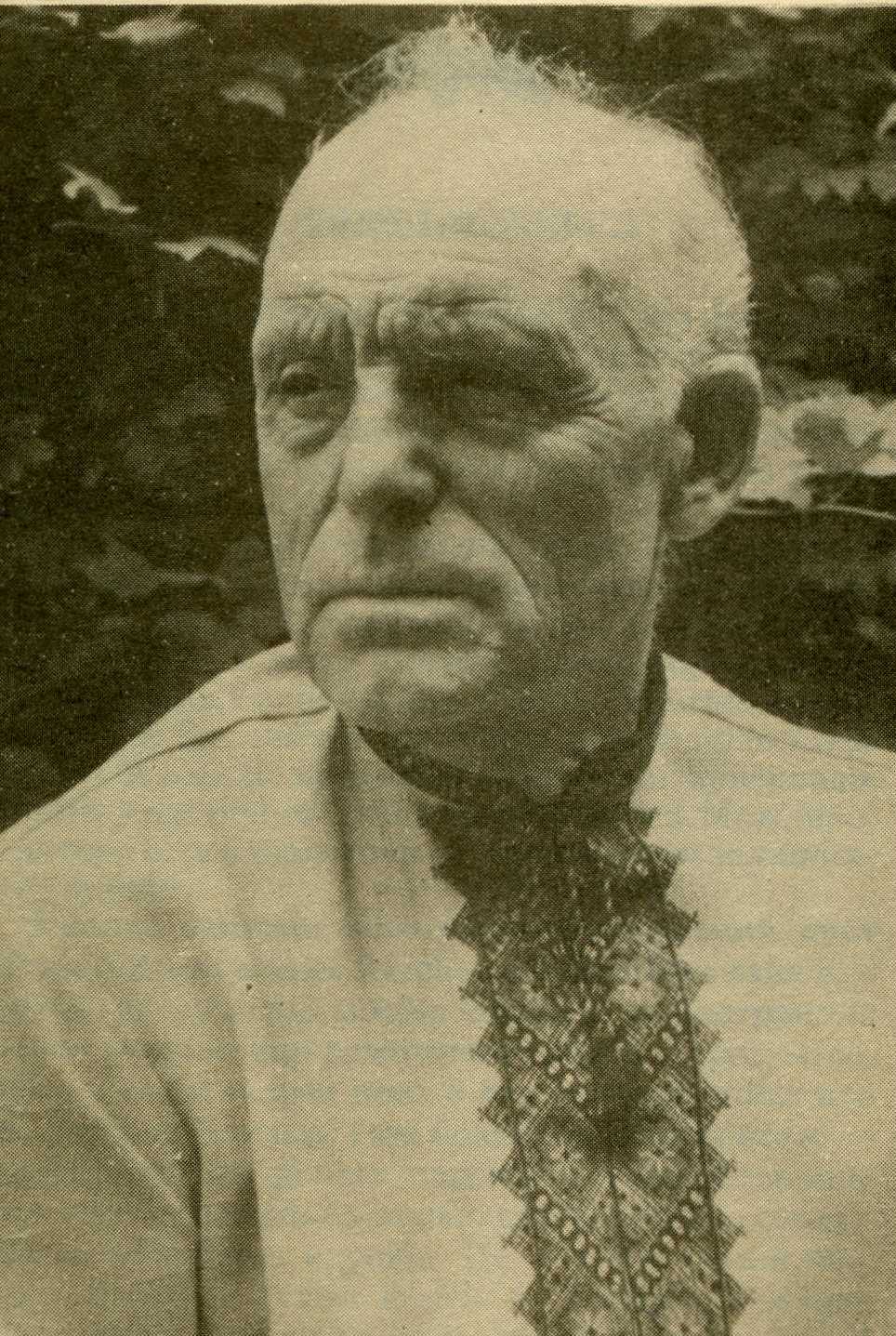Volodymyr Ivanovych KOSOVSKY (born 1923, in the village of Vepryk, Fastiv Raion, Kyiv Oblast—died May 29, 2000, ibid.) was a paramedic and poet. A participant in the Ukrainian national liberation movement, he was a member of the OUN. He was a political prisoner in Soviet prisons and concentration camps (1945–65), the organizer and director of the Kyrylo Stetsenko room-museum (village of Vepryk, 1970), a member of the All-Ukrainian Society of Political Prisoners and Victims of Repression and the National Writers’ Union of Ukraine (1996), and a laureate of the Valeriy Marchenko Prize (1997).

Beginning in 1938, Kosovsky studied at a railway technical school. In 1941, when the Germans occupied the Kyiv region and were followed by OUN expeditionary groups, Kosovsky became impassioned with the national liberation struggle. He wrote poems about the trident and the national flag and became a member of the OUN. He was appointed the local leader of the underground district organization. He wrote leaflets denouncing both the German and Stalinist regimes; his sister, Olya, typed them.
Immediately after the war, Kosovsky was sentenced to 20 years of hard labor. He served his sentence in a concentration camp at mine No. 5 of the “Vorkutaugol” combine. He wrote poems and hid them. He was on the verge of death in a mine face when he was rescued by a fellow countryman, the doctor and poet Yevhen Cherednychenko, and a Polish prisoner who was also a doctor.
In 1965, after completing his sentence, he returned to his home village of Vepryk. He traveled to Lviv to help the family of Mykhailo Soroka, with whom he had served his sentence and whom he considered his ideological mentor. He enrolled by correspondence at the Kyiv Medical College and qualified as a paramedic. After several years of practice in various villages, Kosovsky was appointed head of the Vepryk paramedic and obstetrics station. He had the gift of a folk healer. He continued to write poetry. He helped Ivan Honchar search the villages of the Fastiv region for antique paintings, icons, and household items for the folk museum in Kyiv. He established a memorial room for Kyrylo Stetsenko in the village’s House of Culture, searching for exhibits from the composer’s relatives and in the Kyiv museums of Mykola Lysenko and Lesia Ukrainka.
Kosovsky was constantly monitored by the KGB, which sought to neutralize his activities. From his home library, they confiscated Oles Honchar’s novel “The Cathedral,” Ivan Bilyk’s book “The Sword of Ares,” and Oles Berdnyk’s “The Chalice of Amrita,” among others. He was repeatedly summoned for “educational talks.”
From 1990, Kosovsky worked at the Kyrylo Stetsenko Museum. Several of his poetry collections were published. For his collection “In the Thorny Thicket,” Kosovsky was admitted to the Writers’ Union of Ukraine. His creative work also includes the book of journalism “How the Strings of the Kobza Snapped,” among others. Kosovsky’s poetry was published in Ukraine and abroad in various collections. He often appeared as a poet and educator at creative gatherings, literary evenings, and schools. He was an active member of the editorial board of the journal “Zona.”
Kosovsky was the first laureate of the V. Marchenko Literary Prize for his short stories about camp life, published in the journal “Zona.”
BIBLIOGRAPHY
Publications
“In the Thorny Thicket: Poems.” Foreword by Ye. Cherednychenko. Kyiv: Irys, 1993, 208 pp.;
“How the Strings of the Kobza Snapped.” Kyiv: Naukova Dumka, 1997;
“Father (Ivan Kosovsky): A Word from Behind Bars.” *Zona*, no. 15 (2001), pp. 23–26;
“True Stories (About the Stay of Political Prisoners in the ‘Rechlag’ Camps, Vorkuta).” *Zona*, no. 12 (1997), pp. 121–133;
“Day and Night Duma.” Compiled by Yu. Khorunzhy. Kyiv: Fakt, 2001, 192 pp.;
“I Am Proud of the Valeriy Marchenko Prize; Hospitable Georgia; Love Behind Barbed Wire: Memoirs of a Political Prisoner.” *Zona*, no. 13 (1998), pp. 202–213.
Literature
“In Memory of Volodymyr Kosovsky.” *Zona*, no. 18 (2004), pp. 391–392;
“Resistance Movement in Ukraine, 1960–1990: An Encyclopedic Guide.” Chief Editor Osyp Zinkevych. 2nd, supplemented ed. Kyiv: Smoloskyp, 2012, pp. 374-375.
Prepared by V. Ovsienko based on the publication “Resistance Movement in Ukraine.”